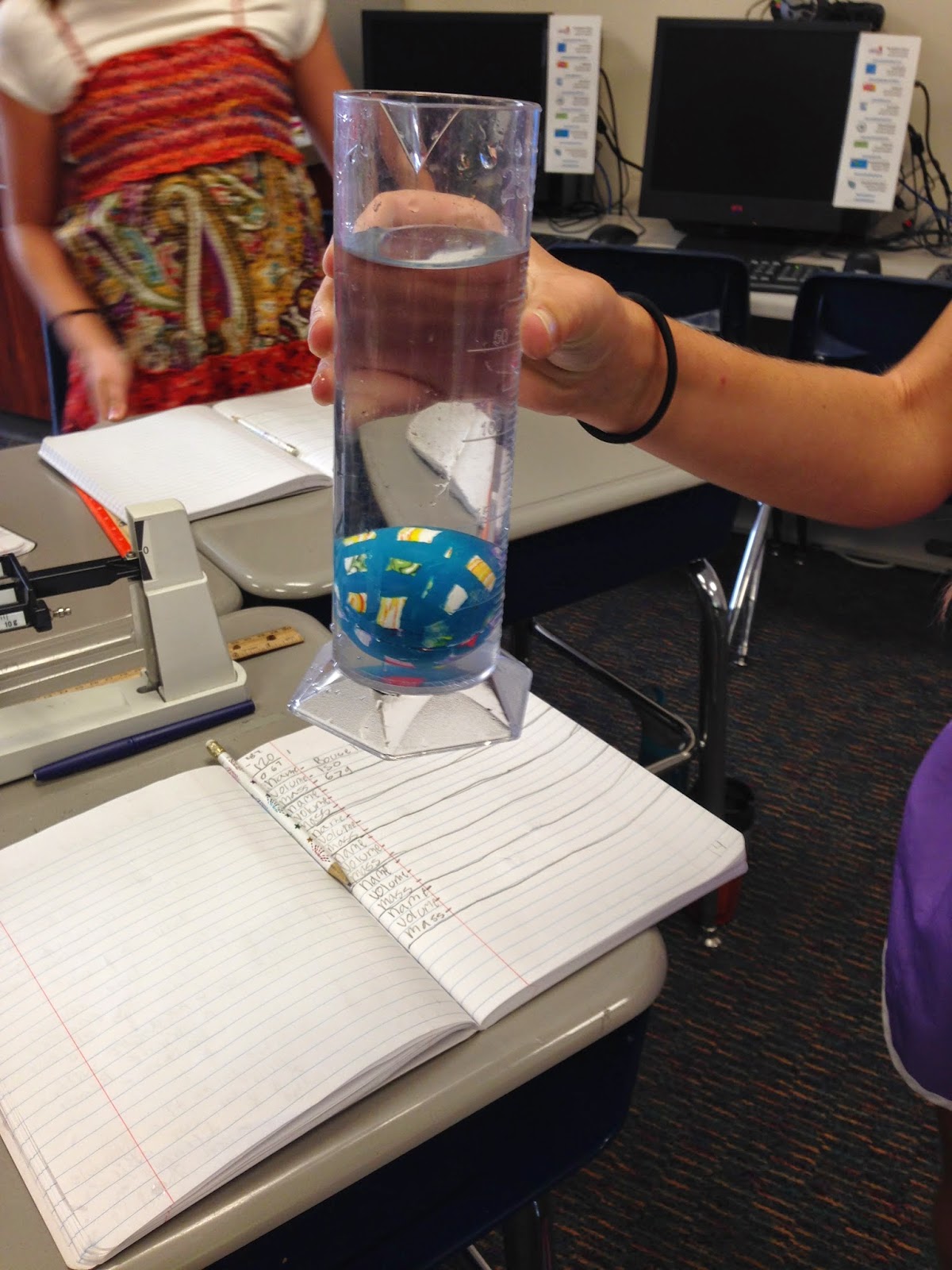Friday, September 26, 2014
Volume and Mass
Wednesday, September 17, 2014
Glow Stick Investigation
 |
| Glow stick dipped in hot water |
 |
| Glow stick dipped in hot water |
 | |
| Glow stick dipped in hot water, then again in cold water at the bottom. You can see the difference! |
Posted by Rebecca May at 10:14 AM 0 comments
Labels: 4th grade, Particles, Science, Thermal Energy
Monday, September 15, 2014
Subtraction Strategies
Posted by Rebecca May at 10:56 AM 0 comments
Labels: 4th grade, subtraction
Particles in Different States of Matter
 |
| Our particles made out of stickers |
We began by marking off a "jar" on the floor. We just used chairs as our boundaries. We packed ourselves into the "jar" and pretended to be the particles of a solid block of ice, frozen in a jar in the freezer. We were all touching, and no one was really moving much. Then we pretended someone took us out of the freezer and sat us down on the counter of a comfortably-warm room, so we started to slowly melt into a liquid. We began to move around and bump into each other, still within our jar. Finally, someone held us over the stove, so we began to move faster and faster, bumping into each other and the walls of the jar, until finally we became a gas and came out of the jar and flew around the room. We compared the particles of a gas to a sugared-up toddler. Ha ha!! Then we went in reverse and eventually became a liquid, then a solid again.
Posted by Rebecca May at 9:10 AM 0 comments
Labels: 4th grade, Particles, Properties of Matter, Science, Thermal Energy
Friday, September 5, 2014
The Scientific Method
The last two days of science class have been all about the scientific method. We decided to do an experiment to determine what effects different liquids would have on the physical properties of gummy bears. We used a glass of water as our control, then brought in a glass of vinegar, a glass of water/baking soda, and a glass of water/salt. Before we put the gummy bears in the solutions, we first measured their length, width, thickness, and mass. We also observed their physical traits. Then we added the gummy bears to the solutions and left them overnight. The next day we observed their physical traits and again measured their length, width, and thickness. I hadn't ever done this experiment before, so I was pretty surprised by the differences we saw!!
 |
| Our gummy bears in relation to the normal one in front |
 |
| Measuring the gummy bear left in salt |
Posted by Rebecca May at 12:40 PM 0 comments
Labels: 4th grade, Science, Scientific Method
Wednesday, September 3, 2014
Tools Search
 |
| A student example of our journal entry |
 |
| A student example of our journal entry |
Posted by Rebecca May at 6:13 PM 0 comments

















